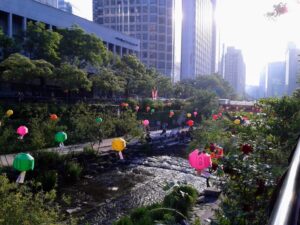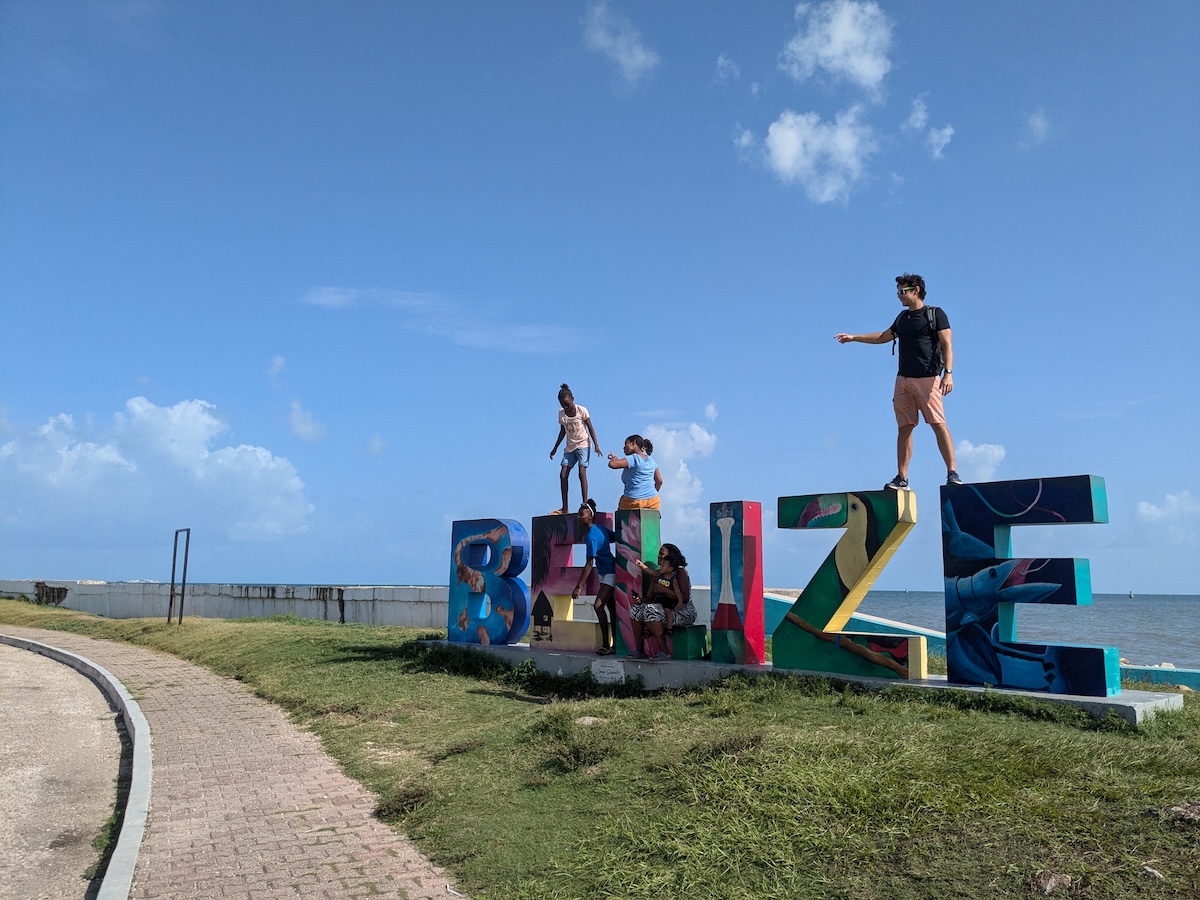The interior of Paraíba holds two treasures that are the pure essence of the Brazilian Northeast: the vibrant and technological Campina Grande, known as the “Capital of Forró,” and the charming and cinematic Cabaceiras, affectionately nicknamed the “Nordestern Hollywood” (Roliúde Nordestina).
Together, they offer an unforgettable journey through tradition, culture, innovation, and the dramatic landscapes of the sertão (backlands).
This itinerary is your complete guide to exploring these two unique cities.
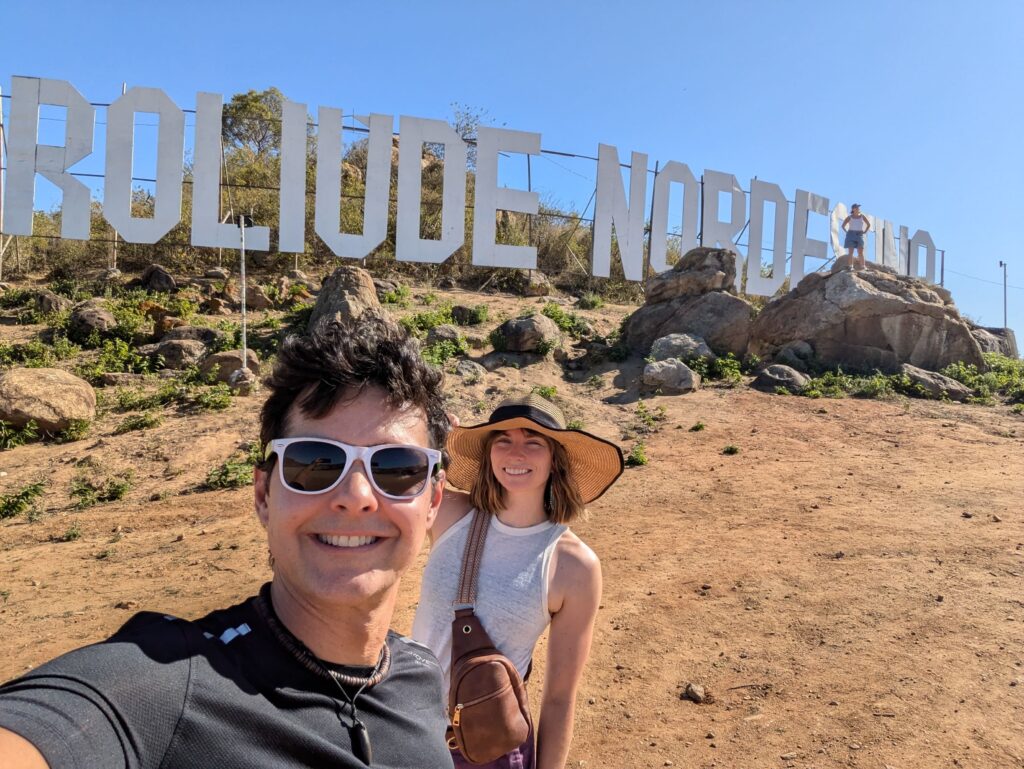

Part 1: Campina Grande – The World’s Largest São João
Campina Grande is not just a city; it’s a state of mind. Modern and university-filled, it buzzes all year round, but during the month of June, it transforms into the epicenter of Northeastern culture, attracting millions of visitors.
What to Do in Campina Grande:
- The World’s Largest São João: If your visit is in June, you’ll land right in the planet’s biggest June festival. The Parque do Povo is the main stage, a gigantic area filled with palhoças (little straw huts), festival grounds, countless food stalls, and two large stages for shows of forró pé-de-serra, xaxado, and baião. The energy is contagious. Tip: Buy tickets well in advance and be prepared to dance a lot!
- Museum of São João: To understand the magic of the festival year-round, visit this museum inside the Parque do Povo. It preserves the history of the June festivals with exhibits of traditional festival dresses, accessories, photographs, and musical instruments.
- Museum of the Three Tambourines (Museu dos Três Pandeiros): A beautiful collection that tells the history of Northeastern popular music, focusing on forró. It’s a real lesson on Luiz Gonzaga, Jackson do Pandeiro, and other masters.
- The New Station of Arts (A Nova Estação das Artes): A vibrant cultural center set in the old railway station. It houses spaces for shows, craft fairs, gastronomy, and is a meeting point for Campina’s youth.
- The World’s Largest Rose Button (O Maior Botão de Rosa do Mundo): A city landmark, located at Largo da Rosa. It’s one of the most photographed tourist spots and symbolizes the title of “Campina Grande, the Queen of Borborema.”
- Central Market (Feira Central): For an authentic experience, get lost in the market. Sample regional foods, buy crafts (especially lace and hammocks), and feel the warmth of the local people.
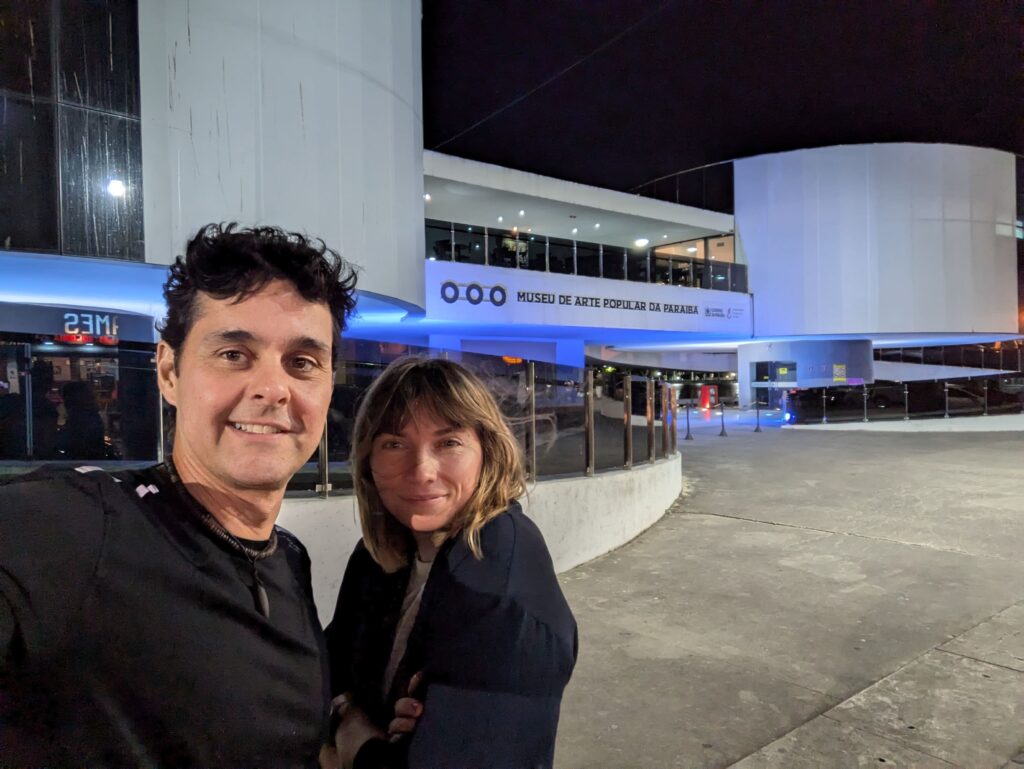
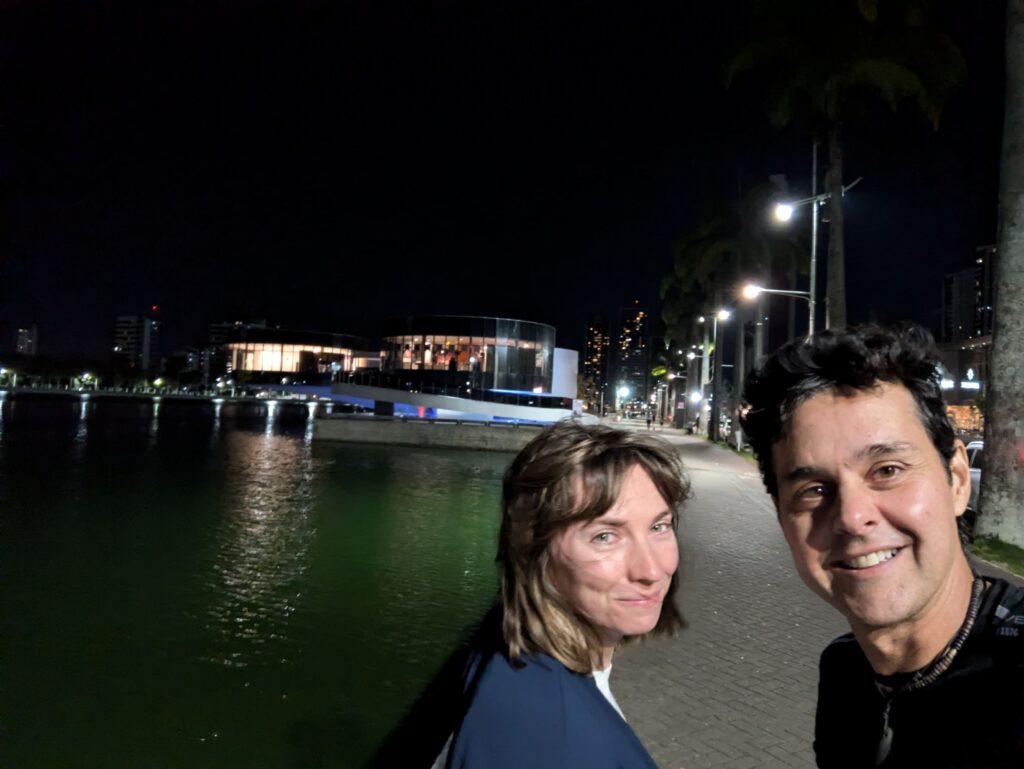

Where to Eat in Campina Grande:
- Typical Cuisine: Be sure to try galinha à cabidela (chicken in blood sauce), baião de dois (rice and bean dish), carne de sol (sun-dried meat), and, of course, all the June festival treats: pamonha (corn paste), canjica (sweet hominy), milho cozido (boiled corn), pé-de-moleque (peanut brittle).
- Recommendations: Restaurante e Forró do Parque (for a typical lunch), Tapiocaria do Sérgio (the best tapioca in town), and, during São João, explore the stalls at the Parque do Povo.


Part 2: Cabaceiras – The Nordestern Hollywood
About 50 km from Campina Grande, a road surrounded by sertão landscapes takes you to Cabaceiras. The “Roliúde” nickname is no joke: the town has been the setting for over 30 national films and soap operas, thanks to its unique and well-preserved Caatinga biome landscape.

What to Do in Cabaceiras:
- Lajedo de Pai Mateus: The most famous and impressive tourist spot. It’s a gigantic rocky formation with huge, rounded stones, some balanced in a surreal way. The sunset here is a spectacle in itself, with colors that paint the sky and the rocks. It was a location for films like O Auto da Compadecida (A Dog’s Will) and A Pedra do Reino (The Stone of the Kingdom).
- The Blue Tile Mansion (Casarão de Azulejo Azul): The house that became “Professor Raimundo’s School” in the miniseries A Pedra do Reino is one of the town’s postcards. Its blue facade stands out in the town’s simple architecture.
- Mother Church of Our Lady of the Immaculate Conception (Igreja Matriz de Nossa Senhora da Conceição): The town’s main church, from the 18th century, holds the history and faith of the sertanejo people.
- Cinematographic Museum (Museu Cinematográfico): A small but interesting museum that tells the history of filmmaking in the region, with photos, props, and curiosities from the movies made in Cabaceiras.

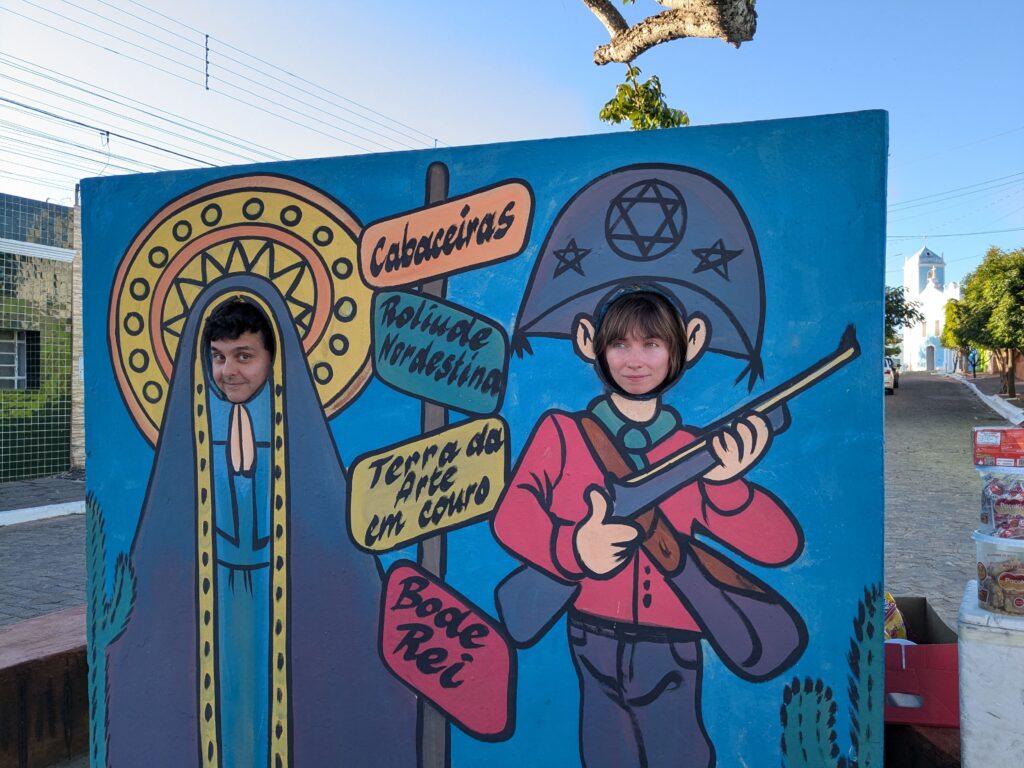
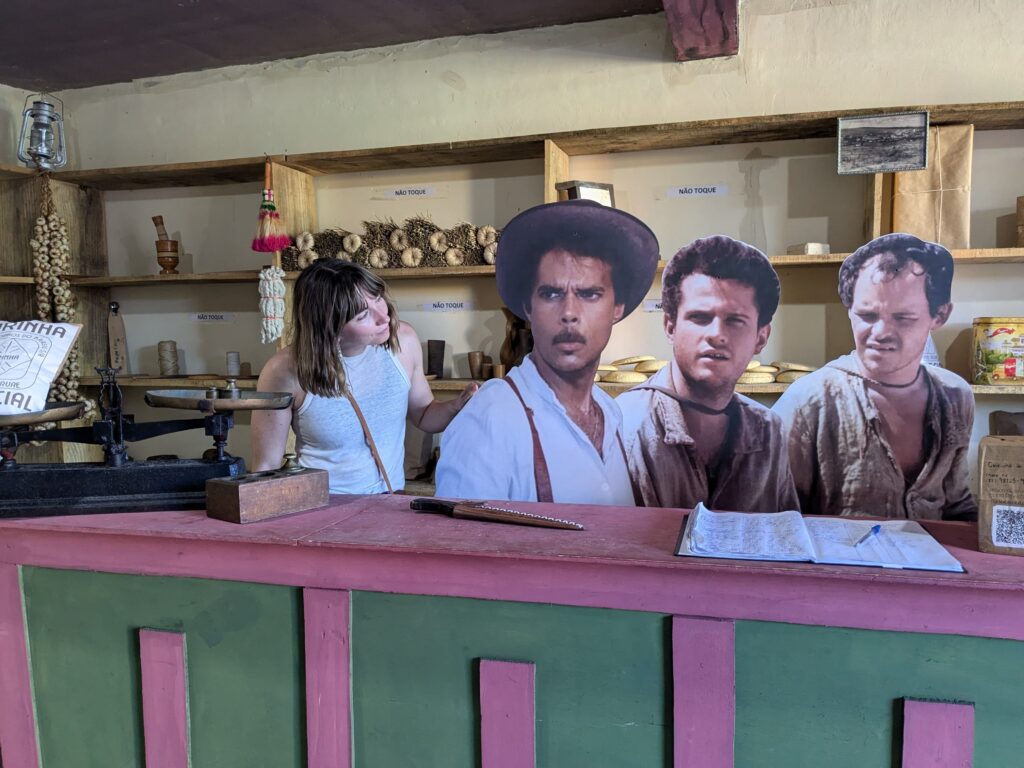
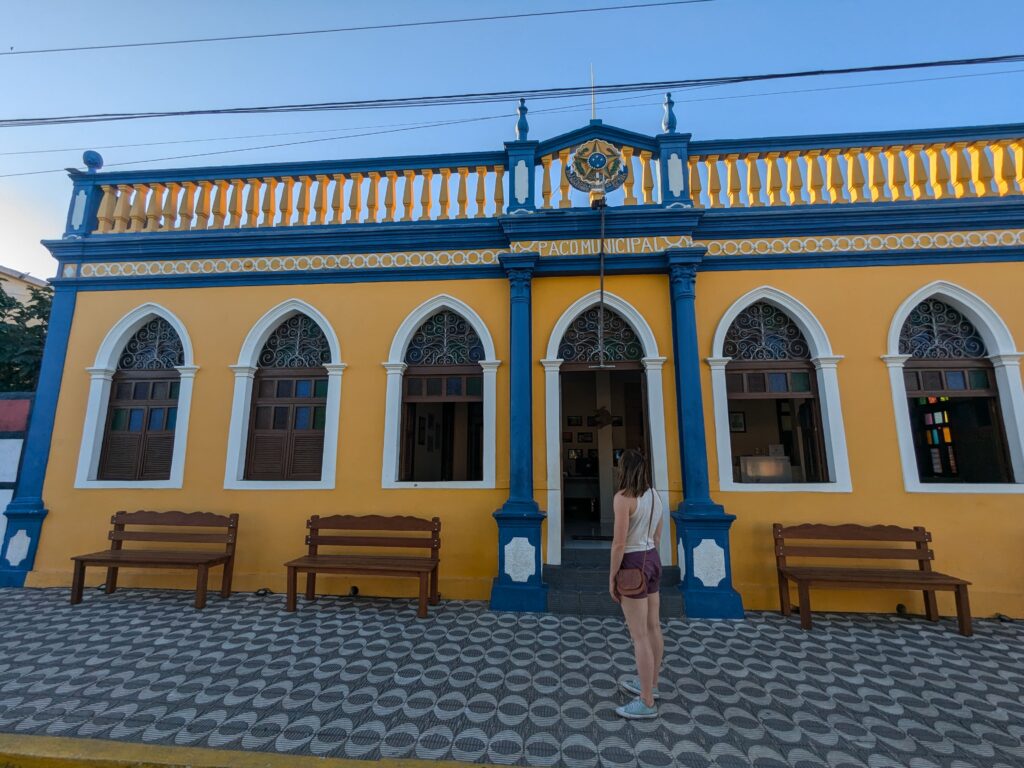
- Hiking in the Sertão: Hire a local guide for trails to learn about the unique flora and fauna of the Caatinga. The experience of feeling the silence and grandeur of the sertão is transformative.
Where to Eat in Cabaceiras:
The town’s specialty is goat meat (carne de bode). You’ll find it prepared in every way: roasted, stewed, fried (as in buchada and panelada, traditional offal dishes). Recommendation: The Restaurante e Pousada Lajedo de Pai Mateus is a great option to try authentic sertaneja cuisine.

Suggested Travel Itinerary
Ideal Duration: 3 to 4 days.
Day 1: Arrival in Campina Grande
- Arrive, check into your hotel, and in the evening, explore the Nova Estação das Artes for dinner and some forró music.
Day 2: Exploring Campina Grande
- Morning: Visit the Museu dos Três Pandeiros and the Museu do São João.
- Afternoon: Have lunch at a typical restaurant, visit the World’s Largest Rose Button and the Central Market.
- Evening: If it’s June season, go to the Parque do Povo. If not, look for a live forró house (there are several in the city).
Day 3: Nordestern Hollywood – Cabaceiras
- Rent a car or hire a day tour (the best option).
- Morning: Leave early from Campina and drive to Cabaceiras (about 1 hour trip). See the town center: the Blue Mansion and the Mother Church.
- Afternoon: Lunch on the famous goat meat. Around 3 PM, head to Lajedo de Pai Mateus to explore the rocks and wait for the spectacular sunset.
- Evening: Return to Campina Grande.

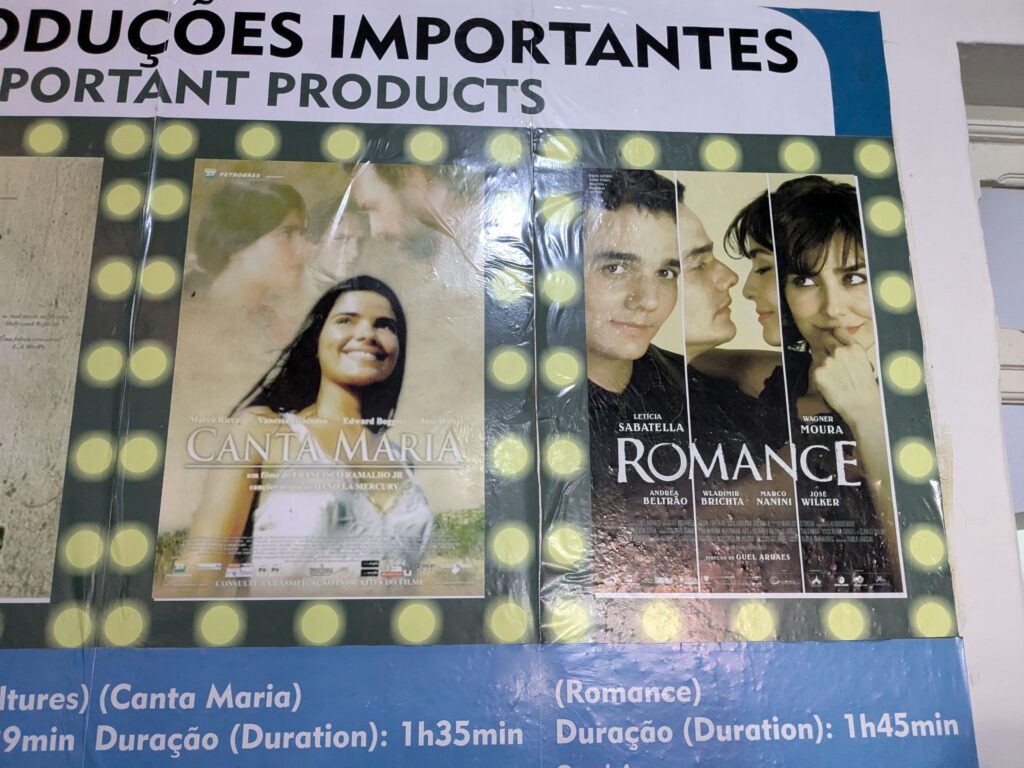

Day 4: Departure or Extra Day
- Free morning to buy souvenirs (handicrafts, cachaça, coalho cheese) and head to the airport.
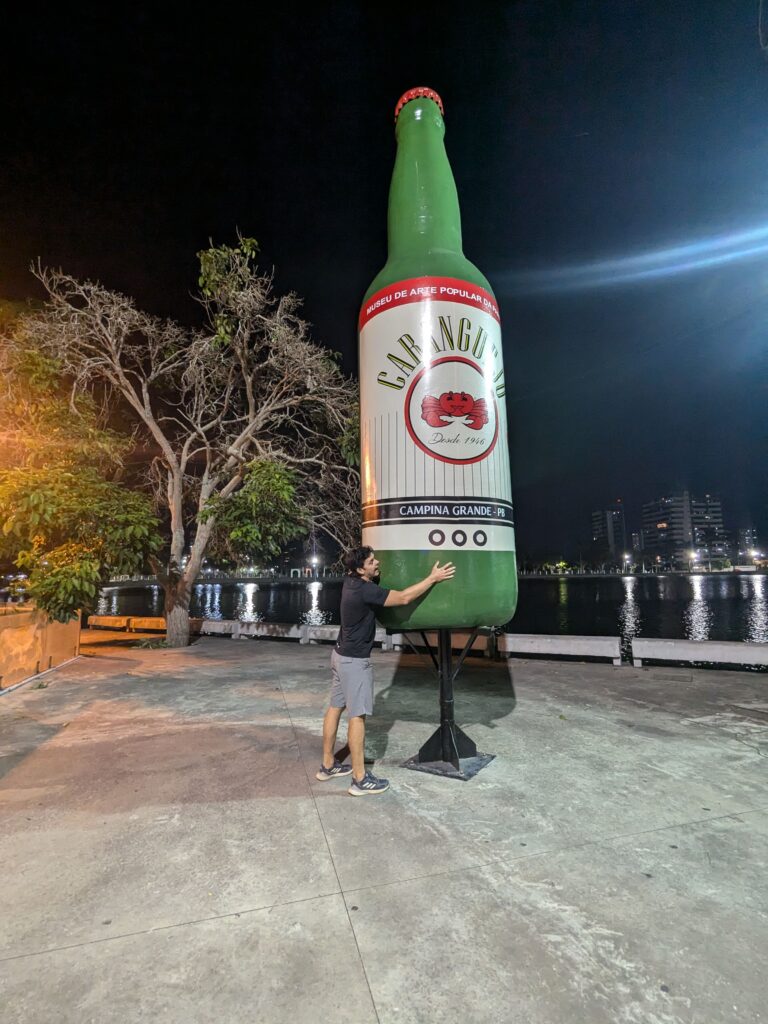
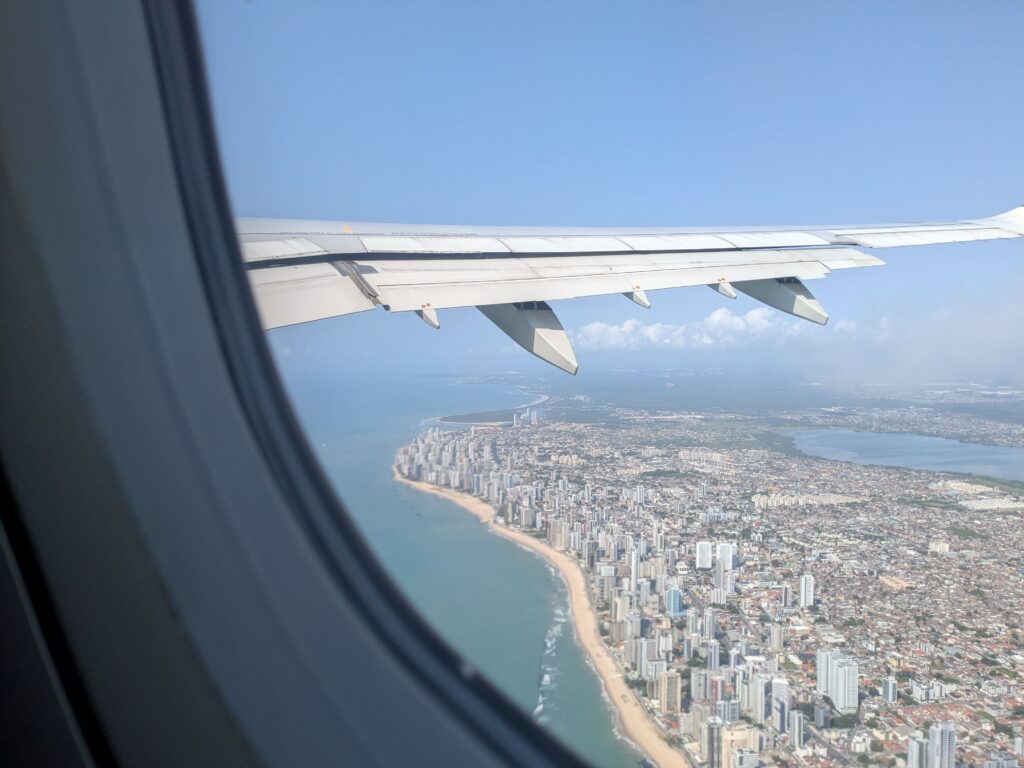

Essential Traveler Tips
When to Go:
- High Season (June and July): Perfect for experiencing São João, but everything is more crowded and expensive. Book EVERYTHING well in advance.
- Low Season (Rest of the year): The trip is quieter and cheaper. The weather is hot and dry, typical of the sertão.
How to Get There:
- Plane: Campina Grande Airport (CPV) receives flights from some major cities. The other option is to fly into João Pessoa (JPB) and take a bus or car to Campina (approximately a 2-hour trip).
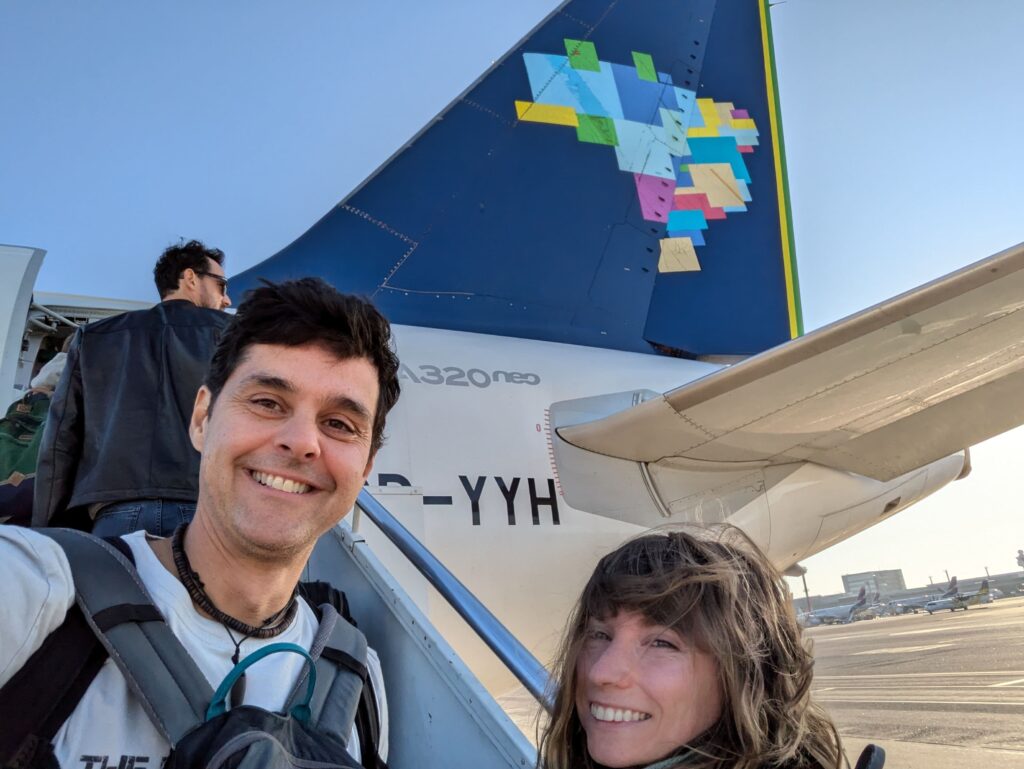
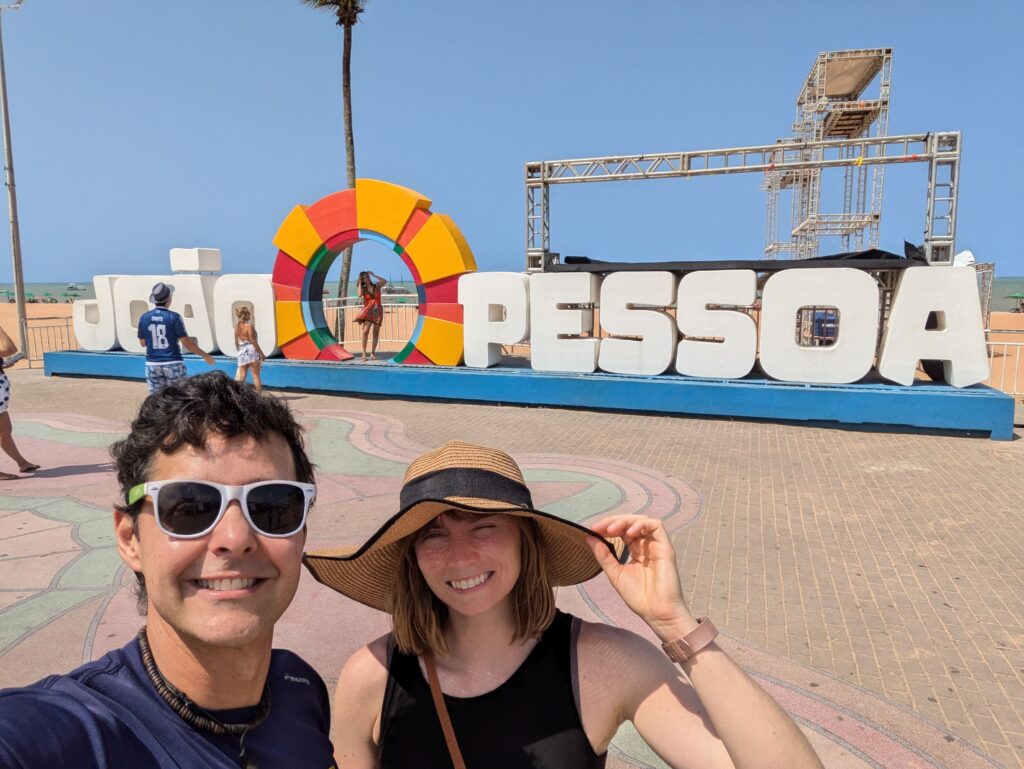
Getting Around:
- Rental Car: The best option for freedom, especially for going to Cabaceiras and Lajedo de Pai Mateus. Check out my article with the 5 Best and Cheapest Websites to Search and rent cars in Brazil.
- Taxi/Uber: Work well in Campina Grande.
- Guided Tour: Agencies offer day tours from Campina to Cabaceiras, a great option for those who don’t want to drive.
What to Pack:
- Light, light-colored clothing for the daytime heat.
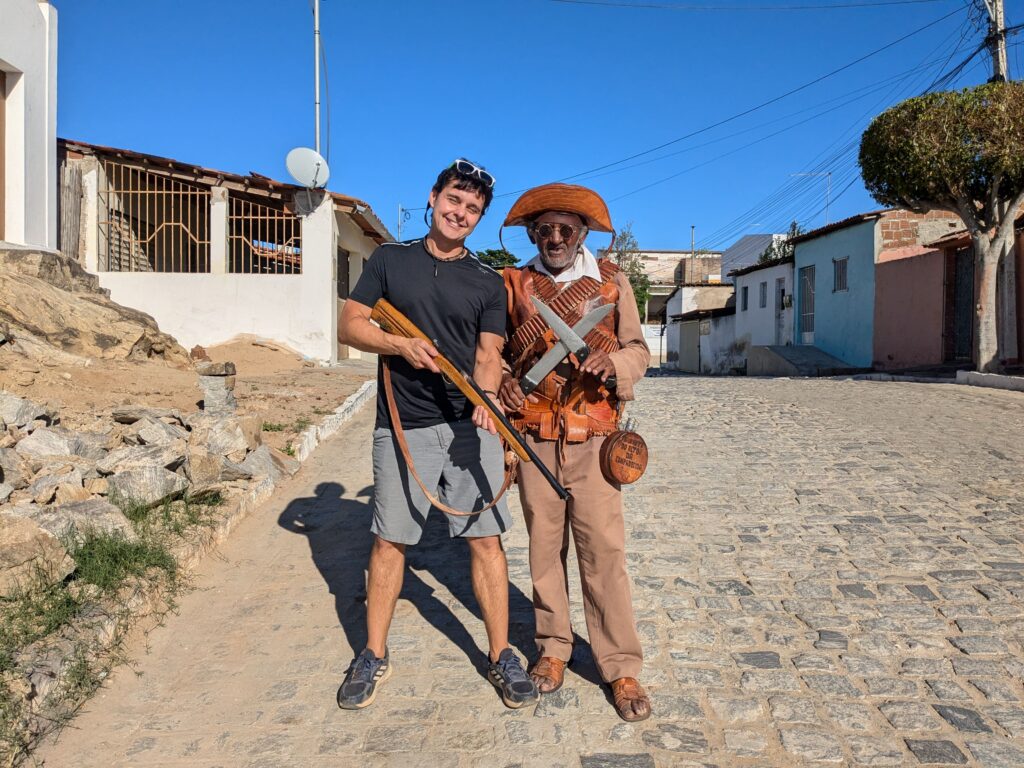

- A jacket or sweater for the evenings, which can be chilly, especially during the June festival period.
- Hat, sunglasses, and sunscreen are essential.
- Comfortable shoes for walking and dancing forró.
- Cash for markets and small shops.

Conclusion
Visiting Campina Grande and Cabaceiras is diving into the soul of the Northeast. It’s a journey that involves all the senses: the lively sound of forró, the bold flavor of country food, the sight of landscapes that look like movie sets, and the genuine warmth of the sertanejo people.
Whether in the frenzy of the world’s largest June festival or in the contemplative silence of Lajedo de Pai Mateus, this region of Paraíba promises a deep and authentic experience, leaving behind a longing that can only be cured by your next visit.

